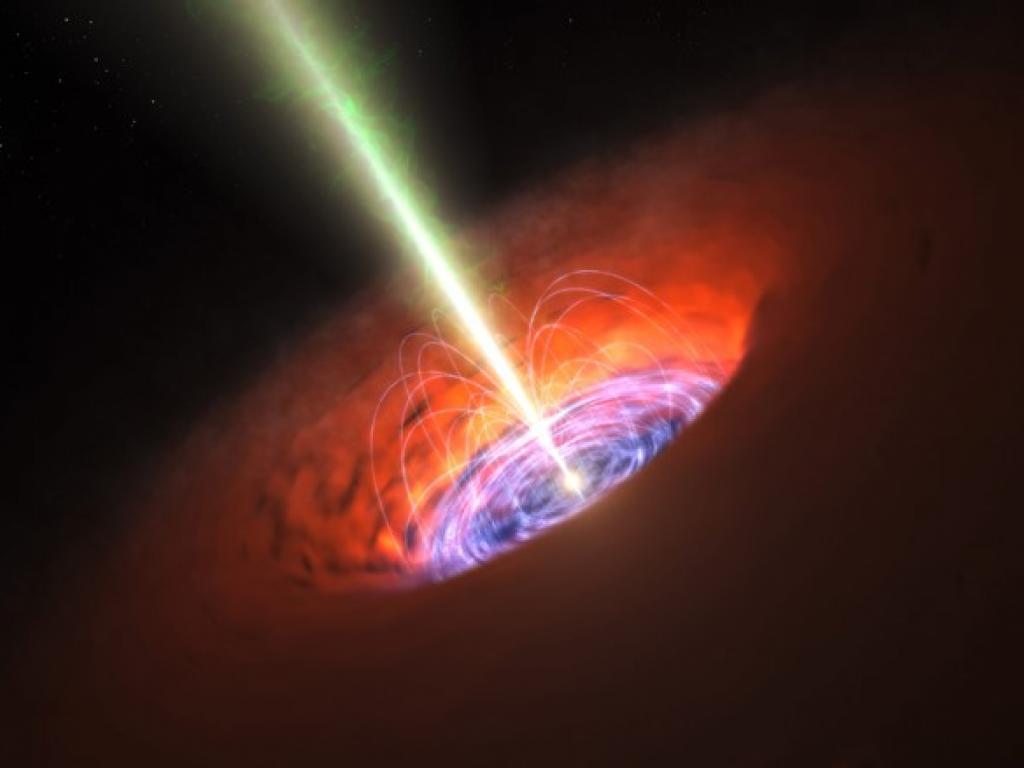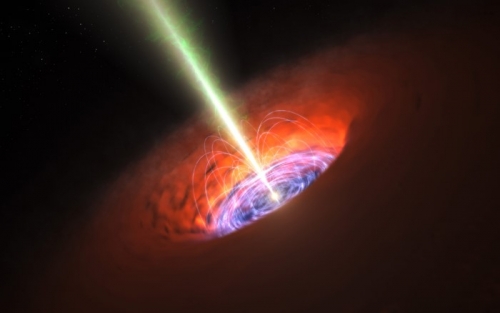Black holes aligned in space


An artist’s impression of a supermassive black hole at the centre of a galaxy.
Concerning the supermassive black holes which pivot galaxies, at least, we now know that they all spin in the same direction. UCT’s Professor Russ Taylor explains that this means “there must be coherent spin in the structure of this volume of space that was formed from the primordial mass fluctuations that seeded the creation of the large scale structure of the universe”.
In other words, the whirling of black holes has been synchronised since the beginning of the universe.
While studying distant galaxies through their radio telescopes, Taylor and co-researcher Jagannathan noticed that the radio jet position angles of radio galaxies appeared to be aligned. To explain: radio galaxies are types of active galaxies that are very luminous at radio wavelengths. The supermassive black holes at the centre of these galaxies suck in vast amounts of cosmic material. When this material gets spewed out at almost the speed of light, the spectacular light shows they produce are called radio jets. Only radio telescopes allow us to see these jets.
“The new result is the discovery (for the first time) of alignments of the directions of the jets of radio galaxies over a large volume of space,” said Taylor. “The jets are produced by the supermassive black holes at centres of these galaxies consuming the material of the galaxy. The only way for this alignment to exist is if supermassive black holes are all spinning in the same direction.”
Since these black holes can’t be aware of one another, this spin alignment must have occurred during the formation of the galaxies in the early universe, added Taylor.
Their paper, ‘Alignments of Radio Galaxies in Deep Radio Imaging of ELAIS N1’, was published inMonthly Notices of the Royal Astronomical Society on 11 April 2016 and is set to make waves.
Taylor and Jagannathan hope to explore possible alignment on an even bigger scale.
“It would be interesting to compare this implication with predictions of angular momentum structure from universe simulations,” they write.
Story Yusuf Omar. Photo European Southern Observatory, via Wikimedia Commons.
